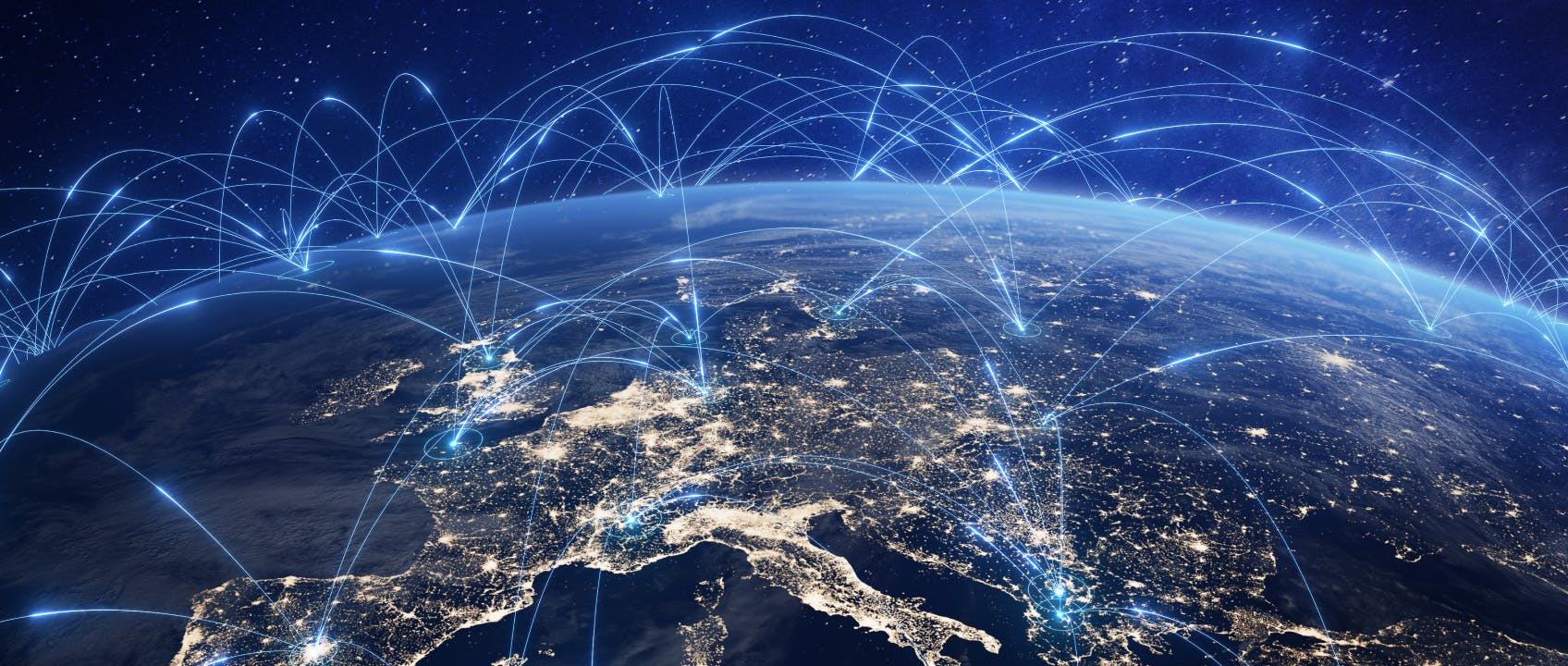The future of payments in 2024: international and consumer-focused

The world of digital payments is one of the sectors evolving most rapidly. With 2.3 trillion cashless transactions worldwide forecasted for 2027 by Capgemini¹ compared to 1.3 trillion in 2023, the future of payments is undoubtedly digital.
Internationalization and enhanced customer experience are the two most significant trends in 2024. On one hand, payment acceptance has expanded its geographical and structural boundaries with the development of more efficient cross-border and omnichannel payment solutions, supported by regulations that have simplified their implementation, as is happening in the EU². On the other hand, the customer remains king: a study by Deloitte³ shows that a positive payment experience encourages spending 140% more than a negative experience, driving the development of more agile solutions, offering personalized services such as new alternative payment methods dedicated to specific needs, and high levels of security.
Ecommerce, which has reached a volume of 6.3 trillion dollars⁴, and the proliferation of new solutions and technologies, make it difficult to find the right payment strategy to drive business growth.
"Stop chasing the shiny new thing and focus on getting more from your payment and online assets."
Alex Wilson, Director of Product Management at Mastercard⁵, stresses that there is no miracle solution: the key to success lies in following trends and designing a strategy that maximizes the available technologies.
What are the trends that will contribute to the success of the payment strategy in 2024?
- Frictionless flows through card tokenization
Initially associated with the world of fraud prevention, tokenization has proven to be an excellent tool for minimizing friction in payment flows. According to Visa⁶, 35% of digital consumers have forgotten to update their credit card information at least once: by storing payment information and automatically updating it upon expiration, tokens ensure continuity of service, crucial in the case of recurring payments and subscription models. The same study indicates that network tokens would increase authorization rates by 2.2%, increasing not only companies' revenues but also customer loyalty. - International payments
Cross-border transactions continue their unstoppable rise, as confirmed by Juniper Research's forecasts⁷, according to which a third of all Ecommerce spending will be international by 2028, surpassing 3 trillion dollars. These figures highlight the opportunity represented by cross-border payments. As Deloitte⁸ points out, the EU is driving various initiatives, such as the pan-European bank card and digital wallet, which aim to reduce friction in cross-border payments to meet industry needs. - Alternative payment methods and digital wallets
Alternative payment methods and digital wallets are increasingly gaining market share, and their transactional value will grow by more than 30%, according to Alipay UK CEO⁹, Eva Zhang. According to McKinsey, it is consumers who are leaning towards the advantages offered by these payment methods: APMs allow for designing a personalized and convenient shopping experience that fosters customer loyalty and benefits companies. Even official institutions are favoring their adoption: just think of the European Payments Initiative for the creation of a digital wallet throughout the EU, which represents a significant step towards greater adoption of alternative payment methods. - Instant payments and Open Banking
With the advent of Open Banking and the entry of new entities into the payments sector, instant payments are gaining ground: they offer greater transparency, reduce processing effort, and consequently keep transaction costs low. A McKinsey study¹⁰ indicates that in Europe, they already account for 12% of the volume of transfers in the SEPA area, but could reach 45% of its 23 billion transactions and an even higher percentage in account-to-account (A2A) payments. - Security and fraud prevention
Following a 2023 with 38 billion dollars in losses due to online payment fraud (the forecast is 91 billion by 2028), it is evident that online payment fraud techniques are evolving rapidly. However, prevention is also developing new solutions: McKinsey points out that generative AI could improve the performance of fraud technology by 30% to 50%. Another very promising solution is Transaction Risk Analysis (TRA): a Mastercard study observed that with the introduction of TRA, 80% of its payments in the UK in 2021 were sent directly to the authorization flow without going through two-factor authentication, allowing for an increase in conversion rates.
Fraud in online payments is a broad topic that cannot be addressed in a few lines: learn more about the global landscape and the latest trends in Ecommerce fraud prevention with our free whitepaper.
What to expect in 2024
The digital payments sector in 2024 is evolving towards more agile, secure, and efficient methods, and new trends point to stronger infrastructures that contribute to business growth. As the sector matures, the consolidation of new technologies and rapid adaptation to consumers' new demands will be crucial for companies to thrive in an environment where innovation and adaptability have become the new keywords.
Sources
PAYMENTS TOP TRENDS 2024 | Capgemini Research Institute, 2024
Council adopts regulation on instant payments | European Council, 2024
The true value of customer experiences | Deloitte, 2019
Ecommerce growth worldwide will pick up before tapering off | eMarketer, 2023
Anticipating the future of payments | Mastercard, 2024
Convenience nd control Embedding tokenization in everyday ecommerce | VISA NAVIGATE, 2022
33% of eCommerce Spend to Be Cross-border by 2028 Globally | Juniper Research, 2023
2024 banking and capital markets outlook | Deloitte Insights, 2024
A glance ahead: the European payments landscape in 2024 | Fintech Futures, 2023
On the cusp of the next payments era: Future opportunities for banks | McKinsey&Company, 2023
Our insights

Payment Hub and Payment Orchestration: Why Your Company Needs them

International Payment Gateway: Efficiency, Control and Cross-Border Growth


